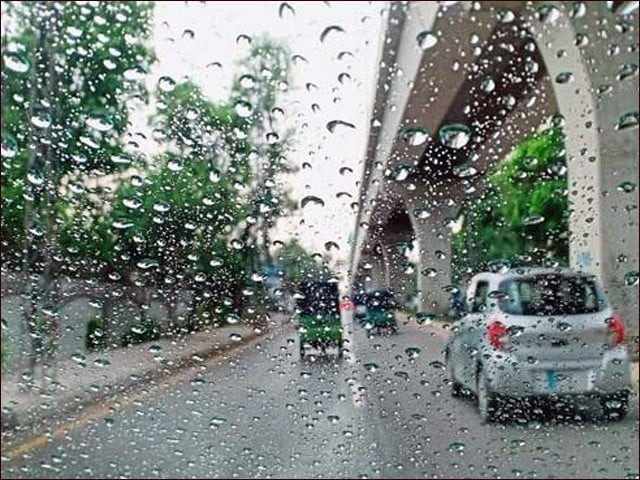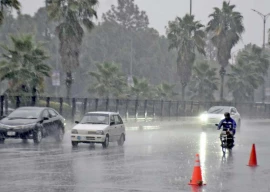
In a bid to address the prevailing smog challenge, Lahore achieved a significant milestone with its first foray into artificial precipitation on Saturday as unveiled by Punjab's interim chief minister, Mohsin Naqvi.
Executed in collaboration with the United Arab Emirates (UAE), this landmark experiment resulted in subtle yet momentous rainfall across 10 sectors of Lahore, showcasing a triumph in meteorological innovation, as elucidated by Naqvi in his address to the media.
In the absence of rainfall, the city has experienced a worsening of smog and elevated air pollution levels. The smog has now extended to several other Puunjab districts, compounding the environmental challenges faced by the region.
The heightened concentration of smog in various parts of the city has resulted in an uptick in citizens seeking medical treatment for ailments related to air pollution in Lahore and neighbouring cities. Individuals are particularly vulnerable to smog exposure on roads and in markets.
Also read: Artificial rain planned for next week
Lahore and New Delhi currently rank among the most polluted cities globally. In response to the alarming situation, the Indian government is also reportedly considering the implementation of artificial rain in smog-affected cities, including New Delhi.
On the local front, the provincial government has been grappling with the smog crisis, implementing measures such as smart lockdowns and mandating the use of facemasks for residents in ten affected districts of Punjab.
The interim chief minister, in applauding the success of Lahore's maiden artificial rain experiment, reiterated the meticulous planning invested in this ground-breaking initiative. He extended gratitude to the Punjab Environment Department and the entire UAE team for their exhaustive scrutiny of the process, culminating in the eagerly awaited results.
Providing insight into the procedure, Naqvi disclosed the deployment of 48 flares for cloud seeding, with a specific focus on the Shahdara area. Significantly, he emphasised that not a single unit of currency from Punjab's exchequer was expended on this achievement, crediting the UAE government's generous support for materialising the artificial rain project.
Read also: Artificial rain in Lahore on cards
The geographical precision of the rain, strategically confined within a radius of 10 to 15 kilometres in Lahore, attests to the accuracy and efficacy of the experiment. Naqvi proclaimed that the outcomes propelled Lahore to the forefront in terms of recorded rainfall.
Remaining vigilant and proactive, the interim chief minister underscored that monitoring and alertness commenced as early as nine o'clock in the morning, underscoring an enduring commitment to the success of the artificial rain initiative.
Artificial rain, commonly known as cloud seeding, is a meteorological manipulation method designed to induce precipitation by introducing specific substances into clouds, fostering the augmentation of raindrop formation.
The United Arab Emirates has been a pioneer in the Arabian Gulf region, utilising cloud seeding as a strategic initiative to address water challenges. Acknowledged as both man-made precipitation and artificial rainmaking, cloud seeding plays a central role in ongoing efforts to augment water resources in the region.
In a recent technological leap, the Emirates has adopted an innovative approach by deploying drones equipped with electric-charge emission instruments and specialised sensors, navigating at low altitudes. These drones administer an electric charge to air molecules, culminating in a method that manifested a substantial rainstorm in July 2021. Notably, in Al Ain, precipitation measured 6.9 millimetres on the 20th and 21st of July.


1722852598-0/BeFunky-collage-(2)1722852598-0-165x106.webp)
1737595568-0/Untitled-design-(66)1737595568-0-165x106.webp)


1732951088-0/Untitled-design-(11)1732951088-0-270x192.webp)


1732012115-0/Untitled-design-(14)1732012115-0-270x192.webp)




1736070587-0/Express-Tribune-(2)1736070587-0-270x192.webp)
1737452260-0/Gaddafi-stadium-(2)1737452260-0-270x192.webp)
1737531830-0/Saim-Ayub-injury-(2)1737531830-0-270x192.webp)









COMMENTS
Comments are moderated and generally will be posted if they are on-topic and not abusive.
For more information, please see our Comments FAQ